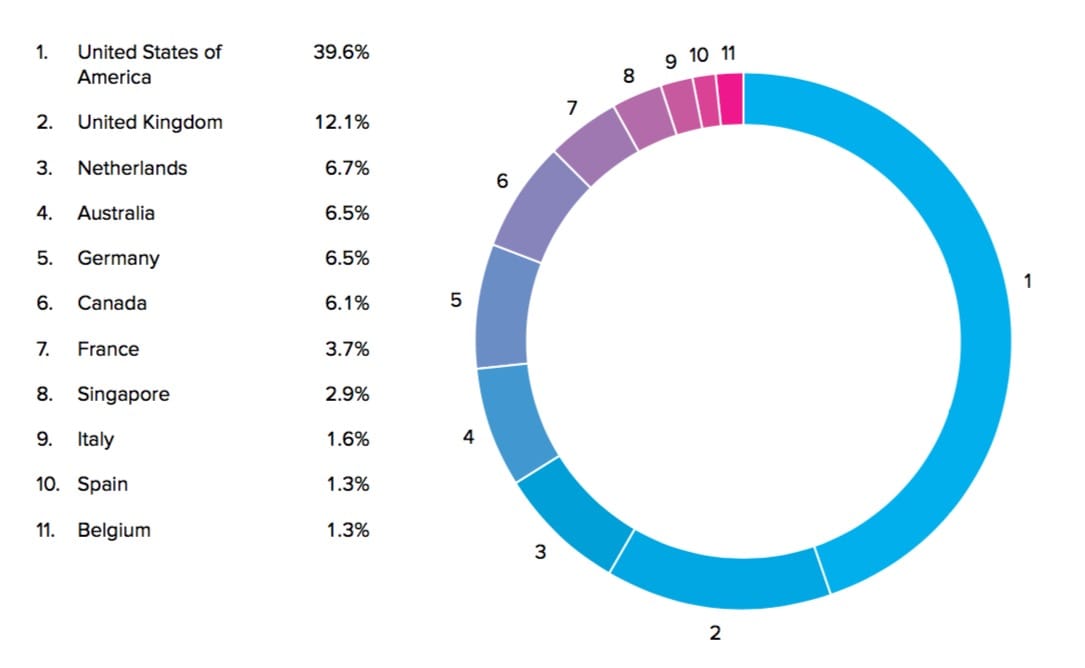
Each quarter 3D Hubs publishes a fascinating report on 3D printer use, and this report is no exception.
The 3D print community network draws its statistics from the massive number of transactions that occur on their system between 3D print buyers and 3D print operators. They collate information about machine types, materials and even ratings to develop charts and tables you can find nowhere else.
So what’s of interest in this report? Well, let’s start in the “Most Used Industrial 3D Printers” section. Here we see that HP has suddenly appeared near the top of the list, in position 2! While this is a relatively new machine to the market, you might not expect it to be jumping so high so soon.
However, there could be a reason for this: the HP 3D printing process is designed for high volumes of prints. That’s why they have a swappable build chamber; while one build is cooling down, you can be 3D printing the next batch. This makes the throughput of the system pretty good, and perhaps is a reason why they produced so many prints – the metric used by 3D Hubs for ranking.
3D Hubs’ users rate the prints they receive from operators, and this information is tracked. While all the top rated machines are pretty close, it’s interesting to see that positions 1 and 2 are both held by Prusa Research equipment, the Original Prusa i3 MK2 and MK2S. These machines are well known for their incredible build quality at a very low price. In our workshop we operate several and have found that not only do these machines work very well, they also seem to revive old filament that won’t properly print on other machines. Bonus!
What’s also interesting is the second most used desktop 3D printer is the Form 2 from Formlabs. This resin-powered machine is notably easy to use and is available at pricing far less than its commercial SLA competitors, so it’s no surprise this machine is jumping up the list. People like using them because they, like the Prusa’s, produce quality output at reasonable cost.
3D Hubs has trimmed their statistics recently, now tracking only “active” hubs. This essentially cleaned out all the older equipment that’s no longer being used that polluted their lists, so now we see only machines that operators are actually using.
Who has the most machines hooked up to 3D Hubs? It’s Ultimaker, one of the oldest and most respected manufacturers of desktop 3D printers.
MakerBot, another mature desktop 3D printer company, sits at position 4. They’ve long been on the 3D Hubs report, but it seems the models representing the company are older, the Replicator 2 and Replicator 2X. Their current models are off the top 20 list, as they haven’t yet gained sufficient popularity.
3D Hubs’ “industrialization” initiative seems to be paying off, as the frequency of prints using industrial technology seems to be increasing. One reason is the huge number of HP MJF prints boosted the SLS category past the resin processes of SLA + DLP. Of course, plastic extrusion processes dominate with over 60% of 3D Hubs’ requests are for that technology.
I am still surprised that PLA is the number one material, and by quite a margin. PLA is the easiest material to print with, and literally anyone could print PLA items themselves with very inexpensive equipment. One could probably justify a cheap PLA 3D printer after a reasonable number of 3D Hubs requests. Perhaps PLA will drop in popularity in the future?
I’m expecting to see more exotic materials gain popularity, as they are more difficult to print and require unusual gear to do so. This seems to me like the sweet spot for 3D Hubs. We’ll have to watch how their materials frequency changes over time.
I am continually astonished at how “black” is always the most popular color. Why? Because black is usually the most difficult color to 3D print. This is because to obtain a black coloring, there are usually more additives in the material than other colors, potentially complicating print settings and bed adhesion.
But enough for now. Check out the rest of the report yourself.
Via 3D Hubs

